Lu Han
One-Embedding-Fits-All: Efficient Zero-Shot Time Series Forecasting by a Model Zoo
Sep 04, 2025Abstract:The proliferation of Time Series Foundation Models (TSFMs) has significantly advanced zero-shot forecasting, enabling predictions for unseen time series without task-specific fine-tuning. Extensive research has confirmed that no single TSFM excels universally, as different models exhibit preferences for distinct temporal patterns. This diversity suggests an opportunity: how to take advantage of the complementary abilities of TSFMs. To this end, we propose ZooCast, which characterizes each model's distinct forecasting strengths. ZooCast can intelligently assemble current TSFMs into a model zoo that dynamically selects optimal models for different forecasting tasks. Our key innovation lies in the One-Embedding-Fits-All paradigm that constructs a unified representation space where each model in the zoo is represented by a single embedding, enabling efficient similarity matching for all tasks. Experiments demonstrate ZooCast's strong performance on the GIFT-Eval zero-shot forecasting benchmark while maintaining the efficiency of a single TSFM. In real-world scenarios with sequential model releases, the framework seamlessly adds new models for progressive accuracy gains with negligible overhead.
AudioTurbo: Fast Text-to-Audio Generation with Rectified Diffusion
May 28, 2025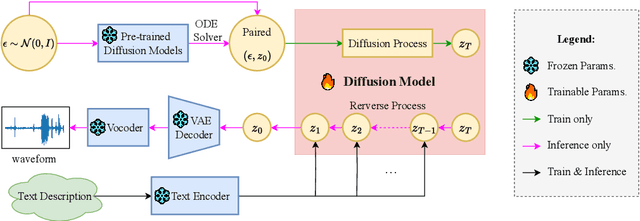


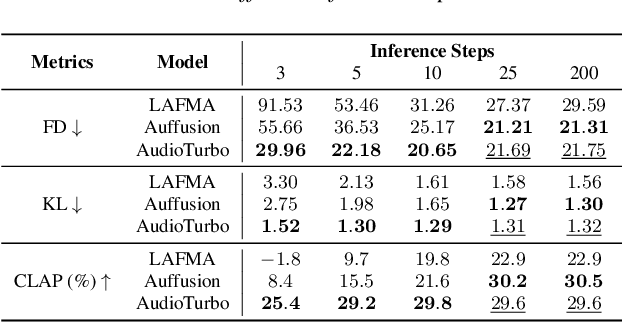
Abstract:Diffusion models have significantly improved the quality and diversity of audio generation but are hindered by slow inference speed. Rectified flow enhances inference speed by learning straight-line ordinary differential equation (ODE) paths. However, this approach requires training a flow-matching model from scratch and tends to perform suboptimally, or even poorly, at low step counts. To address the limitations of rectified flow while leveraging the advantages of advanced pre-trained diffusion models, this study integrates pre-trained models with the rectified diffusion method to improve the efficiency of text-to-audio (TTA) generation. Specifically, we propose AudioTurbo, which learns first-order ODE paths from deterministic noise sample pairs generated by a pre-trained TTA model. Experiments on the AudioCaps dataset demonstrate that our model, with only 10 sampling steps, outperforms prior models and reduces inference to 3 steps compared to a flow-matching-based acceleration model.
OmniAD: Detect and Understand Industrial Anomaly via Multimodal Reasoning
May 28, 2025Abstract:While anomaly detection has made significant progress, generating detailed analyses that incorporate industrial knowledge remains a challenge. To address this gap, we introduce OmniAD, a novel framework that unifies anomaly detection and understanding for fine-grained analysis. OmniAD is a multimodal reasoner that combines visual and textual reasoning processes. The visual reasoning provides detailed inspection by leveraging Text-as-Mask Encoding to perform anomaly detection through text generation without manually selected thresholds. Following this, Visual Guided Textual Reasoning conducts comprehensive analysis by integrating visual perception. To enhance few-shot generalization, we employ an integrated training strategy that combines supervised fine-tuning (SFT) with reinforcement learning (GRPO), incorporating three sophisticated reward functions. Experimental results demonstrate that OmniAD achieves a performance of 79.1 on the MMAD benchmark, surpassing models such as Qwen2.5-VL-7B and GPT-4o. It also shows strong results across multiple anomaly detection benchmarks. These results highlight the importance of enhancing visual perception for effective reasoning in anomaly understanding. All codes and models will be publicly available.
DongbaMIE: A Multimodal Information Extraction Dataset for Evaluating Semantic Understanding of Dongba Pictograms
Mar 05, 2025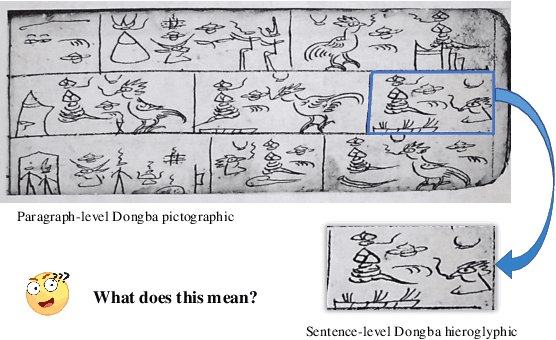

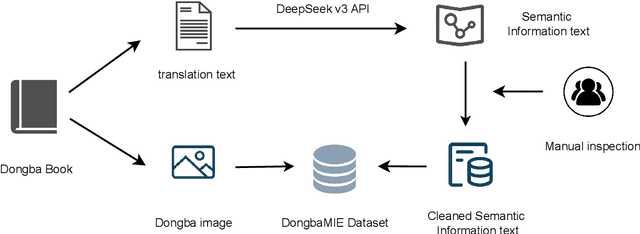

Abstract:Dongba pictographs are the only pictographs still in use in the world. They have pictorial ideographic features, and their symbols carry rich cultural and contextual information. Due to the lack of relevant datasets, existing research has difficulty in advancing the study of semantic understanding of Dongba pictographs. To this end, we propose DongbaMIE, the first multimodal dataset for semantic understanding and extraction of Dongba pictographs. The dataset consists of Dongba pictograph images and their corresponding Chinese semantic annotations. It contains 23,530 sentence-level and 2,539 paragraph-level images, covering four semantic dimensions: objects, actions, relations, and attributes. We systematically evaluate the GPT-4o, Gemini-2.0, and Qwen2-VL models. Experimental results show that the F1 scores of GPT-4o and Gemini in the best object extraction are only 3.16 and 3.11 respectively. The F1 score of Qwen2-VL after supervised fine-tuning is only 11.49. These results suggest that current large multimodal models still face significant challenges in accurately recognizing the diverse semantic information in Dongba pictographs. The dataset can be obtained from this URL.
Molly: Making Large Language Model Agents Solve Python Problem More Logically
Dec 24, 2024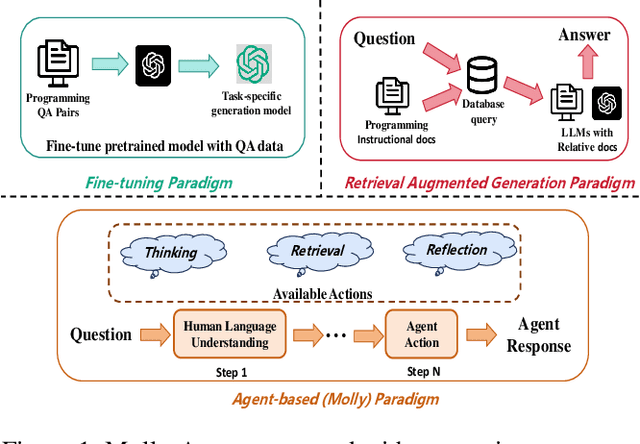
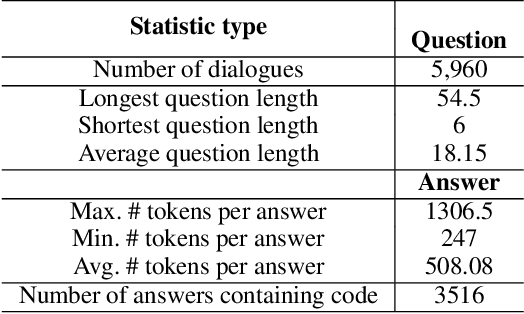
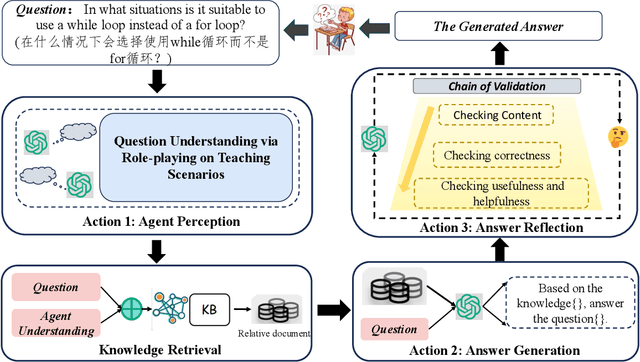

Abstract:Applying large language models (LLMs) as teaching assists has attracted much attention as an integral part of intelligent education, particularly in computing courses. To reduce the gap between the LLMs and the computer programming education expert, fine-tuning and retrieval augmented generation (RAG) are the two mainstream methods in existing researches. However, fine-tuning for specific tasks is resource-intensive and may diminish the model`s generalization capabilities. RAG can perform well on reducing the illusion of LLMs, but the generation of irrelevant factual content during reasoning can cause significant confusion for learners. To address these problems, we introduce the Molly agent, focusing on solving the proposed problem encountered by learners when learning Python programming language. Our agent automatically parse the learners' questioning intent through a scenario-based interaction, enabling precise retrieval of relevant documents from the constructed knowledge base. At generation stage, the agent reflect on the generated responses to ensure that they not only align with factual content but also effectively answer the user's queries. Extensive experimentation on a constructed Chinese Python QA dataset shows the effectiveness of the Molly agent, indicating an enhancement in its performance for providing useful responses to Python questions.
MIETT: Multi-Instance Encrypted Traffic Transformer for Encrypted Traffic Classification
Dec 19, 2024



Abstract:Network traffic includes data transmitted across a network, such as web browsing and file transfers, and is organized into packets (small units of data) and flows (sequences of packets exchanged between two endpoints). Classifying encrypted traffic is essential for detecting security threats and optimizing network management. Recent advancements have highlighted the superiority of foundation models in this task, particularly for their ability to leverage large amounts of unlabeled data and demonstrate strong generalization to unseen data. However, existing methods that focus on token-level relationships fail to capture broader flow patterns, as tokens, defined as sequences of hexadecimal digits, typically carry limited semantic information in encrypted traffic. These flow patterns, which are crucial for traffic classification, arise from the interactions between packets within a flow, not just their internal structure. To address this limitation, we propose a Multi-Instance Encrypted Traffic Transformer (MIETT), which adopts a multi-instance approach where each packet is treated as a distinct instance within a larger bag representing the entire flow. This enables the model to capture both token-level and packet-level relationships more effectively through Two-Level Attention (TLA) layers, improving the model's ability to learn complex packet dynamics and flow patterns. We further enhance the model's understanding of temporal and flow-specific dynamics by introducing two novel pre-training tasks: Packet Relative Position Prediction (PRPP) and Flow Contrastive Learning (FCL). After fine-tuning, MIETT achieves state-of-the-art (SOTA) results across five datasets, demonstrating its effectiveness in classifying encrypted traffic and understanding complex network behaviors. Code is available at \url{https://github.com/Secilia-Cxy/MIETT}.
Sharingan: Extract User Action Sequence from Desktop Recordings
Nov 13, 2024Abstract:Video recordings of user activities, particularly desktop recordings, offer a rich source of data for understanding user behaviors and automating processes. However, despite advancements in Vision-Language Models (VLMs) and their increasing use in video analysis, extracting user actions from desktop recordings remains an underexplored area. This paper addresses this gap by proposing two novel VLM-based methods for user action extraction: the Direct Frame-Based Approach (DF), which inputs sampled frames directly into VLMs, and the Differential Frame-Based Approach (DiffF), which incorporates explicit frame differences detected via computer vision techniques. We evaluate these methods using a basic self-curated dataset and an advanced benchmark adapted from prior work. Our results show that the DF approach achieves an accuracy of 70% to 80% in identifying user actions, with the extracted action sequences being re-playable though Robotic Process Automation. We find that while VLMs show potential, incorporating explicit UI changes can degrade performance, making the DF approach more reliable. This work represents the first application of VLMs for extracting user action sequences from desktop recordings, contributing new methods, benchmarks, and insights for future research.
SOFTS: Efficient Multivariate Time Series Forecasting with Series-Core Fusion
Apr 22, 2024

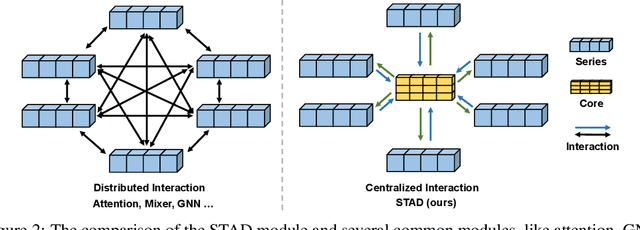

Abstract:Multivariate time series forecasting plays a crucial role in various fields such as finance, traffic management, energy, and healthcare. Recent studies have highlighted the advantages of channel independence to resist distribution drift but neglect channel correlations, limiting further enhancements. Several methods utilize mechanisms like attention or mixer to address this by capturing channel correlations, but they either introduce excessive complexity or rely too heavily on the correlation to achieve satisfactory results under distribution drifts, particularly with a large number of channels. Addressing this gap, this paper presents an efficient MLP-based model, the Series-cOre Fused Time Series forecaster (SOFTS), which incorporates a novel STar Aggregate-Dispatch (STAD) module. Unlike traditional approaches that manage channel interactions through distributed structures, e.g., attention, STAD employs a centralized strategy. It aggregates all series to form a global core representation, which is then dispatched and fused with individual series representations to facilitate channel interactions effectively. SOFTS achieves superior performance over existing state-of-the-art methods with only linear complexity. The broad applicability of the STAD module across different forecasting models is also demonstrated empirically. For further research and development, we have made our code publicly available at https://github.com/Secilia-Cxy/SOFTS.
Twice Class Bias Correction for Imbalanced Semi-Supervised Learning
Dec 27, 2023Abstract:Differing from traditional semi-supervised learning, class-imbalanced semi-supervised learning presents two distinct challenges: (1) The imbalanced distribution of training samples leads to model bias towards certain classes, and (2) the distribution of unlabeled samples is unknown and potentially distinct from that of labeled samples, which further contributes to class bias in the pseudo-labels during training. To address these dual challenges, we introduce a novel approach called \textbf{T}wice \textbf{C}lass \textbf{B}ias \textbf{C}orrection (\textbf{TCBC}). We begin by utilizing an estimate of the class distribution from the participating training samples to correct the model, enabling it to learn the posterior probabilities of samples under a class-balanced prior. This correction serves to alleviate the inherent class bias of the model. Building upon this foundation, we further estimate the class bias of the current model parameters during the training process. We apply a secondary correction to the model's pseudo-labels for unlabeled samples, aiming to make the assignment of pseudo-labels across different classes of unlabeled samples as equitable as possible. Through extensive experimentation on CIFAR10/100-LT, STL10-LT, and the sizable long-tailed dataset SUN397, we provide conclusive evidence that our proposed TCBC method reliably enhances the performance of class-imbalanced semi-supervised learning.
Learning Robust Precipitation Forecaster by Temporal Frame Interpolation
Dec 01, 2023Abstract:Recent advances in deep learning have significantly elevated weather prediction models. However, these models often falter in real-world scenarios due to their sensitivity to spatial-temporal shifts. This issue is particularly acute in weather forecasting, where models are prone to overfit to local and temporal variations, especially when tasked with fine-grained predictions. In this paper, we address these challenges by developing a robust precipitation forecasting model that demonstrates resilience against such spatial-temporal discrepancies. We introduce Temporal Frame Interpolation (TFI), a novel technique that enhances the training dataset by generating synthetic samples through interpolating adjacent frames from satellite imagery and ground radar data, thus improving the model's robustness against frame noise. Moreover, we incorporate a unique Multi-Level Dice (ML-Dice) loss function, leveraging the ordinal nature of rainfall intensities to improve the model's performance. Our approach has led to significant improvements in forecasting precision, culminating in our model securing \textit{1st place} in the transfer learning leaderboard of the \textit{Weather4cast'23} competition. This achievement not only underscores the effectiveness of our methodologies but also establishes a new standard for deep learning applications in weather forecasting. Our code and weights have been public on \url{https://github.com/Secilia-Cxy/UNetTFI}.
 Add to Chrome
Add to Chrome Add to Firefox
Add to Firefox Add to Edge
Add to Edge